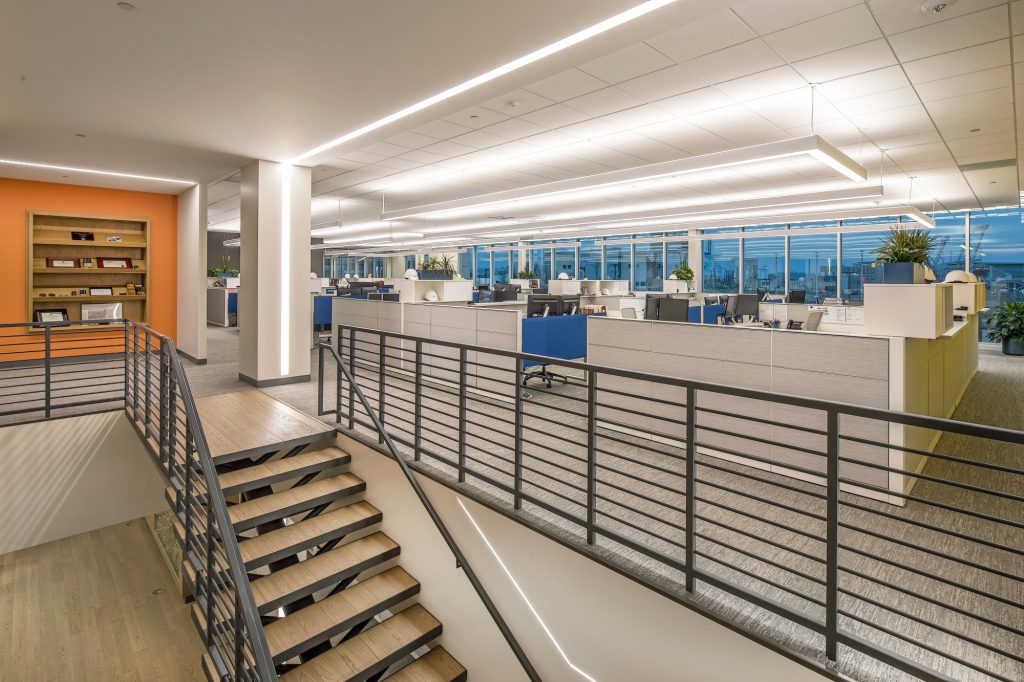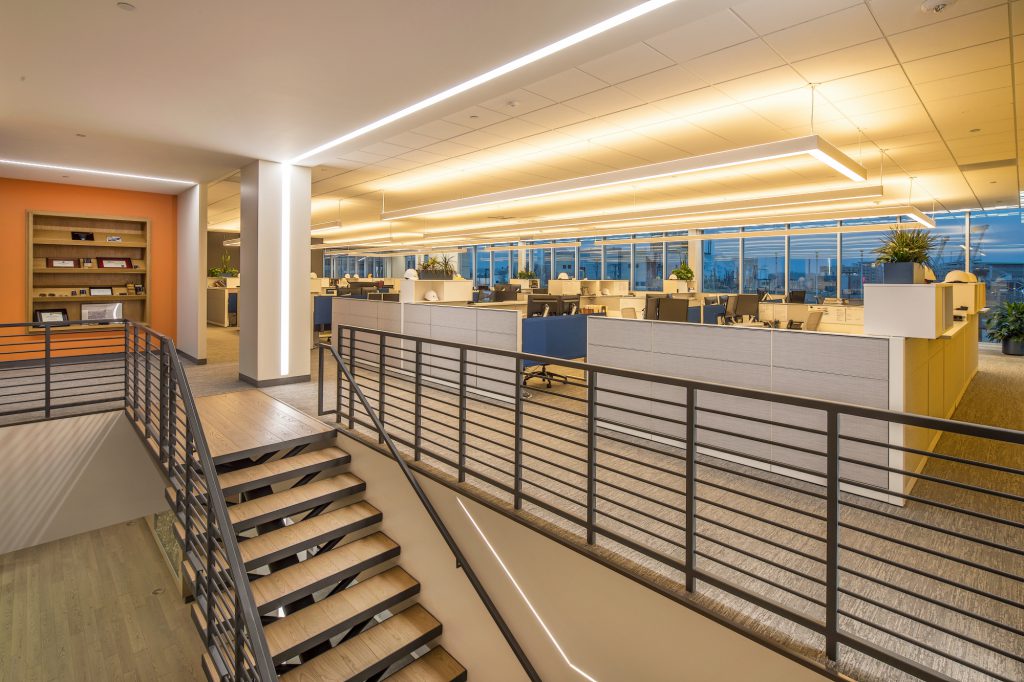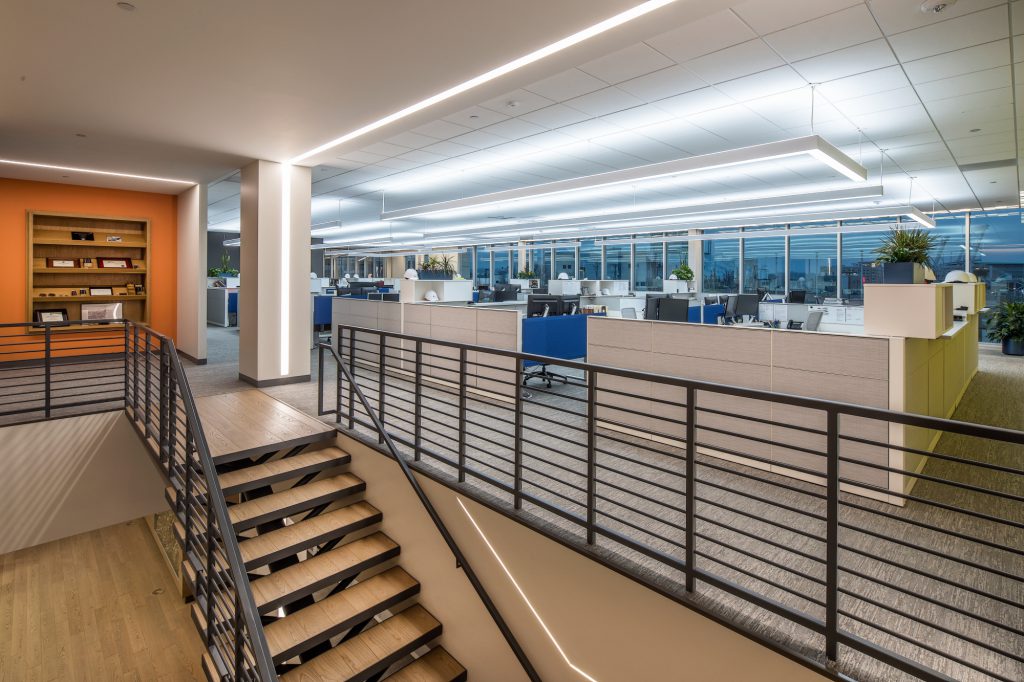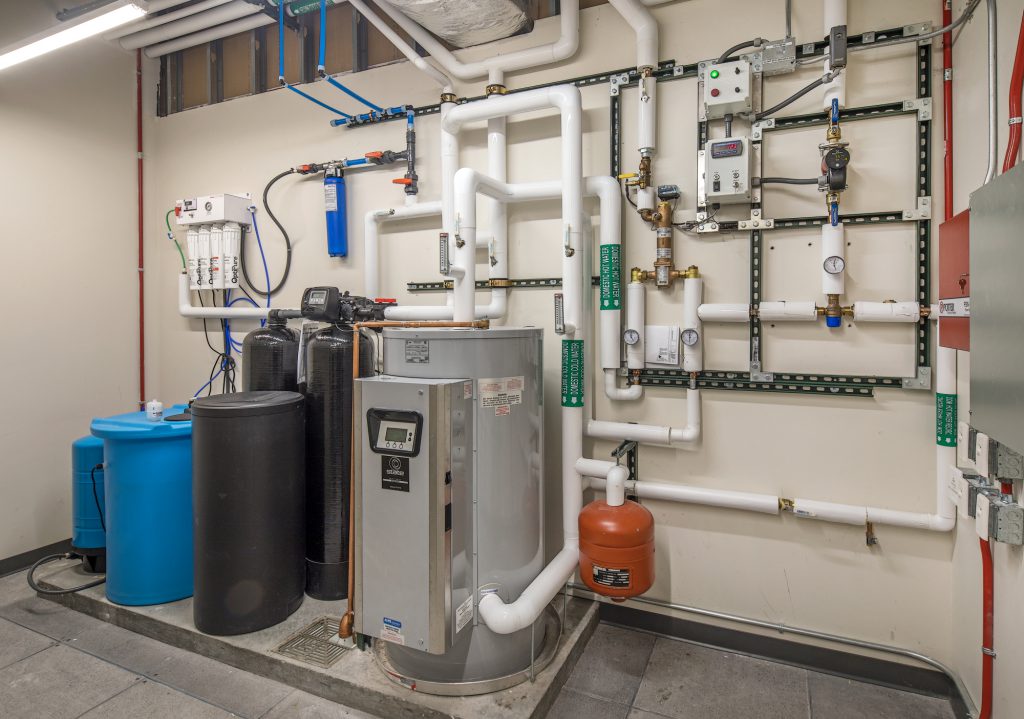Alvine Engineering Wins AEI Awards!
Alvine Engineering is honored to announce that we have been awarded two awards after submitting their corporate headquarters building into the 2020 AEI Professional Project Awards. The downtown Omaha space won the “Award of Excellence” in the lighting design category.
The whole building’s lighting control system is uniquely integrated with many other building systems including the automated shade systems and occupancy sensors, as well as the scene controls on the audiovisual touchscreen controllers in conference rooms. It is even integrated with the Building Management and Control System to operate the color-changing fixtures at the reception desk. A custom control scheme was developed by the Lighting Designer which adjusts the Red, Green, Blue, and Amber LED values based on outside air temperature (blue at cooler temperatures ranging through green and yellow to red at hot temperatures), and adjusts the dimming of the white based on wind speed (at lower wind speed, white is dimmed for more saturated color and increased for a less saturated color at higher wind speeds). This uniquely connects the built and natural environments, fulfilling a WELL Building Standard™ mental health requirement.
A curtainwall provides the office with an abundance of daylight that promotes both occupant health and sustainability. The lighting system is programmed to adjust the color temperature of the electric light fixtures, from 2700K to 6500K, based on the time of day, to blend cohesively with the daylight. It is this combination that promotes the WELL goal of a healthy circadian rhythm. A custom lighting control sequence was developed by the lighting designer to modulate the color temperature from sunrise to sunset, as the lighting control system did not have this as a pre-programmed option. The LED lighting and motorized window shades are controlled by photocells, adjusting automatically when enough daylight is present. This automation allows for a comfortable amount of daylight to enter the space. Dimming of electric lighting also provides the bonus benefit of reducing energy usage.



We were also awarded the “Award of Merit” in the mechanical design category. The design team behind the mechanical systems design for the 1201 Cass Commercial Office Building faced many challenges integrating their systems into the building. The owner not only wanted the office designed to the WELL Building Standard™, but for it to be a model of engineering excellence on display and available for demonstrations. However, these challenges also provided the design team with many opportunities for innovation.
One of the most adaptable, energy-efficient, and acoustically-comfortable mechanical solutions that can be deployed in a space is an underfloor air distribution system. The low velocity air is quiet and delivered to the occupied zone, serving both manual and active diffusers depending on the purpose served by the space. To address rooms with varying load conditions, such as conference rooms, floor swirl diffusers with motorized dampers are used to vary the amount of supply air for cooling automatically based on input from a thermostat in the space. This leads to greater occupant comfort and lower energy consumption. The underfloor system also provides a flexible solution for routing power and telecommunications conduit and cabling beneath the raised access floor.
As a whole, the underfloor air system utilizes both single and dual path air handling units. In both solutions, the air for occupant comfort and ventilation comes out of the floor plenum, occupants breath the air, and then it travels up to the ceiling where it is returned to the air handler and filtered again prior to making another pass through the system. This, along with activated carbon filtration on the air handlers after MERV 13 filtration, provides high quality air for the users of the space. When combined with the cleaning protocols established for the HVAC system, occupants benefit from a reduced likelihood of illness being transmitted through the office.
The underfloor air distribution systems also accommodate individual thermal comfort for each desk area. In fact, the underfloor air distribution systems used throughout the office provide an essential WELL benefit by allowing each workstation occupant to have control of the airflow at each desk. Users can open or close the diffuser to release more or less cool air from the supply plenum to circulate around them, affecting the temperature in their surrounding area. Environmental benefits include lower energy consumption and a dedicated outdoor air handling unit that recovers energy from exhaust to precondition outside air for ventilation.
View the full list of AEI award winners, here.




